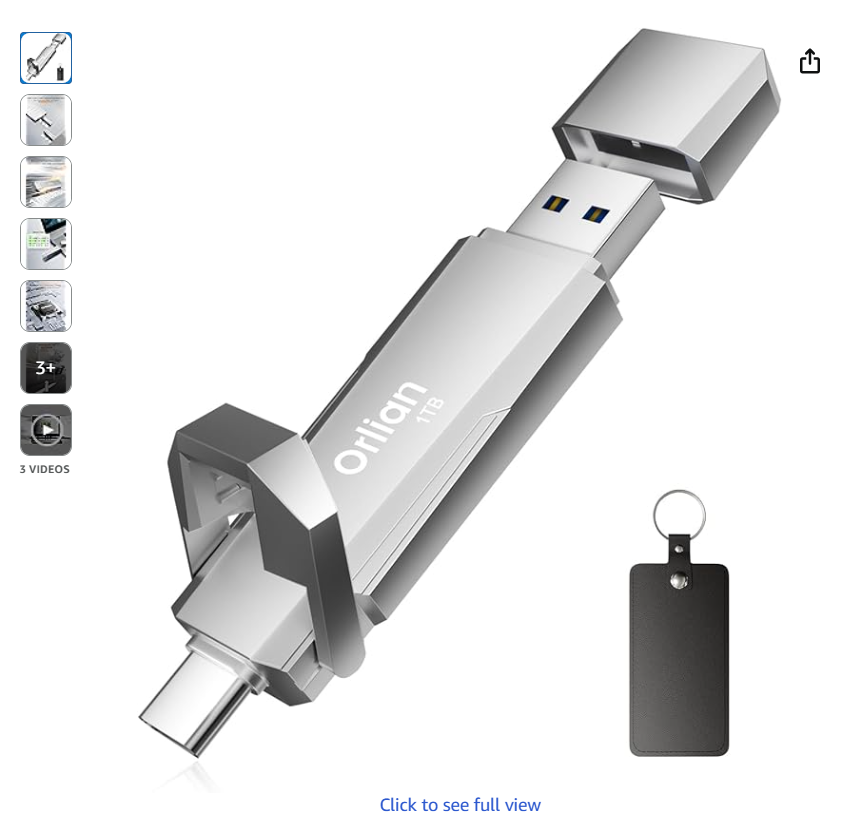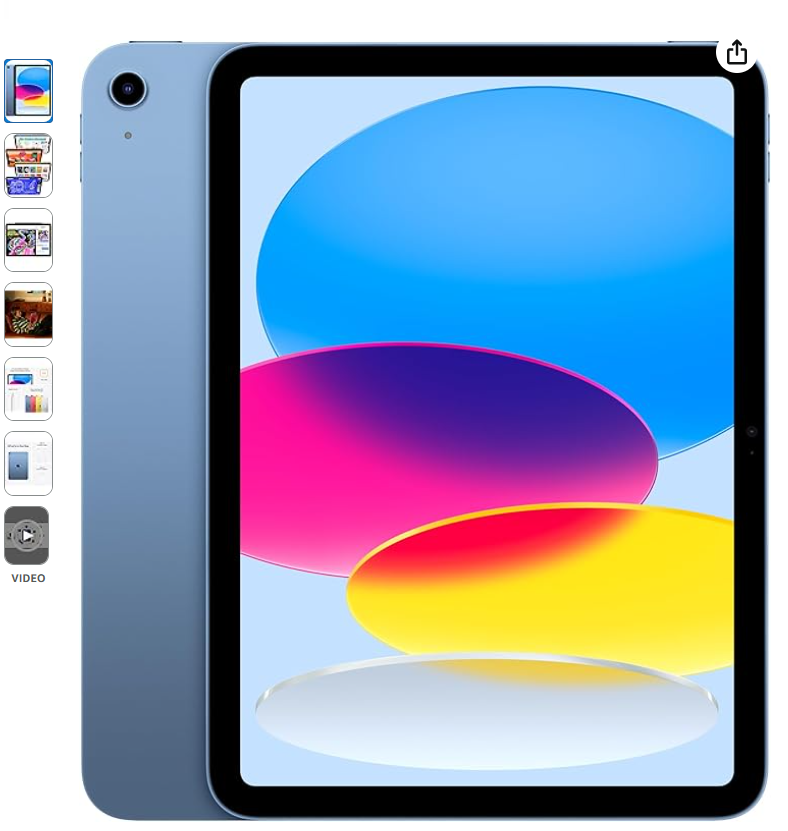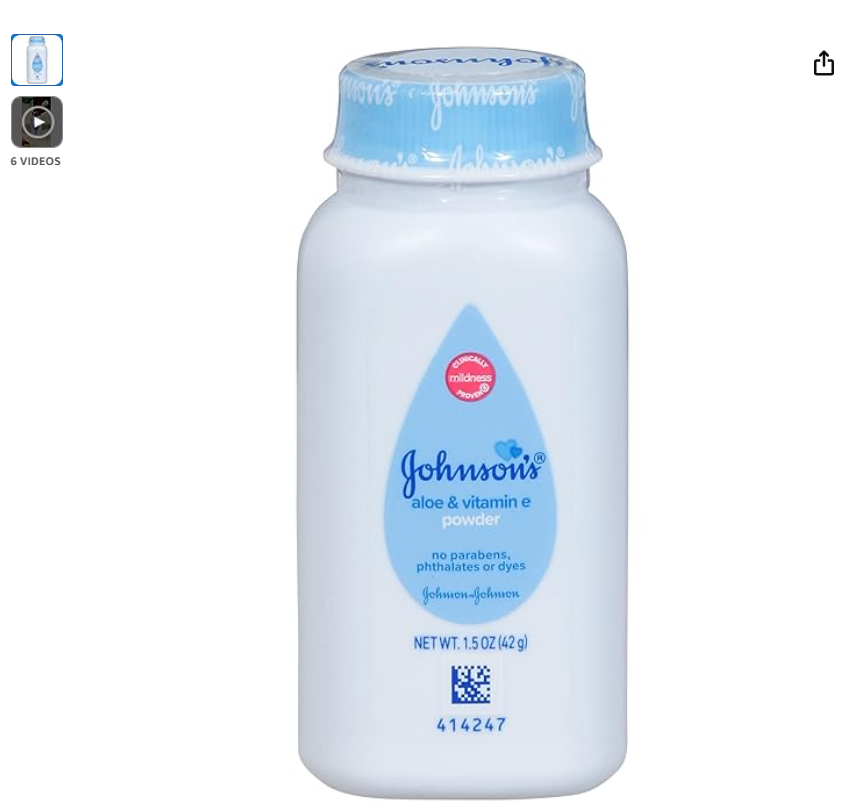A complete, practical review covering design, performance, real-world usage, comparisons, reliability tips, FAQs and a final buying recommendation.
1. Quick Summary
2. Specs & What to Expect
3. Design, Materials & Build
4. Performance & Speed Tests (how to test)
5. Compatibility & Connectivity (USB-A + USB-C)
6. Real-World Use Cases
7. Reliability, Data Safety & Care Tips
8. Comparison vs. Popular Flash Drives
9. Who Should Buy This
10. Pros & Cons
11. FAQ
12. Conclusion & Final Recommendation
1. Quick Summary
The Orian 1TB USB Flash Drive is a compact, metal-bodied flash drive that integrates both USB-A and USB-C connectivity. It promises large-capacity portable storage in a durable, pocketable form factor — ideal for users who need to move big files between modern phones, tablets and older laptops. The metal casing gives a premium feel and helps with heat dissipation, while the dual connectors remove the need for separate adapters.Bottom line: Great option for portable media and cross-device backups — just test the actual read/write speed on arrival and treat it as a portable archive (not a long-term single backup).
2. Specs & What to Expect
Note: exact controller and NAND type are not always publicized by some manufacturers. Below are the expected and visible specs for this device type.
Typical specs (based on the product image and category):
- Capacity: 1TB
- Interfaces: USB-A (likely USB 3.0/3.1) & USB-C
- Case: Metal (aluminum or metal alloy) with removable cap and keyring
- Compatible file systems: NTFS, exFAT, FAT32 (format manually as required)
- OS support: Windows, macOS, Linux, Android (OTG), some Smart TVs
Expect real-world sequential read speeds commonly between 100–250 MB/s on many dual-interface metal flash drives and write speeds that vary more widely (often 50–150 MB/s), depending on the controller and NAND inside. Performance may vary across production batches.
3. Design, Materials & Build
The Orian 1TB’s most immediate selling points are its metal body and dual connectors. Here’s a close look at why these design choices matter.
Metal enclosure advantages
- Heat dissipation: Metal transfers heat better than plastic, so sustained transfers are less likely to trigger thermal throttling compared to cheap plastic sticks.
- Physical robustness: Metal stands up to drops and knocks far better than thin plastic, and it looks premium.
- Weight and balance: The metal shell gives a reassuring weight that feels quality, but it’s still small enough to be pocketable.
Dual-connector convenience
Having both USB-A and USB-C means no adapter is required to jump between older PCs and modern phones or tablets. Many models achieve this by having an integral swivel or a double-ended design. The pictured model appears to have a USB-A plug on one end and a USB-C plug on the other, with a protective cap for each — ideal for on-the-go workflows.
Practical design notes
- Keep the caps safe: detachable caps are easy to lose — consider storing them on a keyring.
- Keyring attachment: useful for mobility, but avoid keeping the drive on heavy keychains where it can be bent.
- Water resistance: metal casing helps but these drives are typically not IP rated — avoid submersion.
4. Performance & Speed Tests (How to test)
Performance varies by internal controller and flash type. If you buy this drive, run a couple of quick tests to verify its performance and quality. Below is a recommended testing procedure and expected benchmark ranges for devices in this class.
How I recommend testing
- Plug into a USB 3.1/3.2 port on a modern PC (avoid front-panel USB hubs on older PCs — use direct motherboard ports).
- Use CrystalDiskMark (Windows) or Blackmagic Disk Speed Test (macOS) to measure sequential and random read/write speeds.
- Copy a single large file (10–20 GB) and time it to validate sequential write speeds under sustained load.
- Copy many small files (thousands of photos) to gauge latency and performance with many filesystem operations.
- Test on a phone using USB-C OTG to confirm compatibility and speed on mobile devices.
Benchmark ranges you might see
| Test | Expected Range | Notes |
|---|---|---|
| Sequential Read | 100–250 MB/s | Depends on controller/NAND, USB port and OS. |
| Sequential Write | 50–150 MB/s | Write speed often slower due to flash type and cache behavior. |
| Many small files (random) | Varies widely — can be slow | Not ideal for thousands of tiny files; pack files in an archive for speed. |
| Phone (OTG) throughput | Similar to PC if phone supports USB 3.1 | Older phones will be slower (USB 2.0 or limited OTG stacks). |
Important caveat: Some manufacturers list “USB 3.1” while internally using slower controllers. That’s why testing on arrival is essential — if speeds are far below expectations (e.g., only 20–30 MB/s), consider returning or requesting a replacement.
5. Compatibility & Connectivity (USB-A + USB-C)
The dual-interface design dramatically increases the drive’s usefulness. Here’s what to expect across platforms and a few tips for trouble-free usage.
Windows
- Plug-and-play on modern Windows (10/11). Use Disk Management to format to NTFS or exFAT if required.
- Use exFAT for cross-platform compatibility with macOS and Android when storing files >4GB.
macOS
- macOS reads exFAT and FAT32 natively. For NTFS writing, you’ll need third-party drivers.
- Formatting to exFAT is recommended if you move files between Mac and Windows frequently.
Android & Mobile Devices (OTG)
- Most modern Android phones with USB-C support OTG and will mount the drive automatically.
- Use the phone’s file manager or a dedicated app to move photos and videos. Some phones require permission to access USB storage.
TVs, Media Players & Game Consoles
- Many TVs accept USB drives for media playback. Use exFAT or FAT32 depending on the TV’s limitations.
- Consoles like the PS4/PS5 and Xbox allow using USB drives for media; for installing or running games, consoles typically require a different storage class (external HDD/SSD recommended).
Formatting advice
If you plan to use the drive across platforms, format to exFAT. If you only use Windows and need file permissions, choose NTFS. Always back up any data before formatting.
6. Real-World Use Cases
1TB in a flash drive opens many practical uses. This section explores workflows where this product shines and where it falls short.
On-the-go media library
Carry a portable movie library — multiple 4K films comfortably fit. For watching directly from a TV, the drive is small and convenient. Ensure the TV supports the file formats and codecs.
Photographers & Videographers
Great as a temporary backup or quick transfer medium between phone and laptop when you need a second copy in the field. For heavy-duty tasks (daily multi-GB offloads over weeks), an external SSD is a more robust long-term solution.
Mobile content creators
Use it to offload footage from a phone or tablet, then edit on a PC. Dual connectors remove the need for adapters — a real time-saver during shoots.
Document sync & portability
Keep archived project folders, installers, or virtual machines for quick transport. Use encryption for sensitive files.
Bootable USB drive / tools
You can create a bootable installer for Windows, Linux or a rescue tool. Speed for booting will be acceptable for installs, though internal SSDs will always be faster for heavy use.
7. Reliability, Data Safety & Care Tips
Flash drives are convenient but have durability and endurance limits. Here’s how to treat them and keep your data safe.
Understand endurance
NAND flash has a finite number of write/erase cycles. Consumer USB flash drives typically use TLC flash — fine for general use but not ideal for constant write-heavy use. If your workload involves frequent writes (e.g., logging, VMs), consider an external SSD instead.
Backup strategy
- Never keep the only copy of important data on a single USB stick.
- Adopt the 3-2-1 backup rule: 3 copies, 2 different media, 1 offsite.
Safe use practices
- Always eject/unmount before removing the drive to avoid corruption.
- Avoid sudden disconnections during large transfers.
- Keep the caps on and store the drive away from moisture and extreme heat.
- Perform occasional health checks with tools or copy verifications (e.g., checksum utilities).
Encryption & security
If you store sensitive information, encrypt the drive using BitLocker (Windows) or VeraCrypt. Do not rely on plain password-protection offered by some low-cost utilities unless you verify strong encryption (AES-256).
8. Comparison vs. Popular Flash Drives
Below is a practical comparison of the typical strengths and weaknesses of the Orian 1TB versus mainstream competitors like SanDisk, Samsung and Kingston.
| Model / Brand | Typical Read/Write | Durability | Unique features | Best for |
|---|---|---|---|---|
| Orian 1TB | ~100–250 / 50–150 MB/s (depends) | Good (metal body) | Dual A & C, metal case, high capacity | Cross-device portable archive & media |
| SanDisk Extreme Pro | Up to 400 MB/s read (models vary) | Very good | High speed, reliable brand support | Faster transfers and pro workflows |
| Samsung USB / BAR | 200+ MB/s (some models) | Very good | Compact, robust firmware | Balanced performance and value |
| Kingston DataTraveler | 100–300 MB/s | Good | Wide range of designs and sizes | Budget-friendly, broad compatibility |
Takeaway: If brand trust and consistently fast speeds are your top priorities, SanDisk and Samsung often deliver more predictable performance. If you want a high-capacity, dual-interface metal drive at a competitive price — and you accept minor variance in speed — the Orian 1TB is a compelling alternative.
9. Who Should Buy This
This drive is ideal for several user types:
- Mobile creators: Photographers and videographers who need temporary offline backups and fast transfers between phone and laptop.
- Media collectors: Users who want a pocketable library of movies and music to use with TVs/tablets.
- Frequent travellers: People who need a small, durable storage device without carrying an external SSD and cable kit.
- Casual power users: Those who want a simple plug-and-play archive device to move large folders without fuss.
This is not recommended as the primary solution for enterprise backups, constantly updated VM images, or other write-heavy production tasks.
10. Pros & Cons
Pros
- High capacity in pocketable form: 1TB is substantial for a flash drive.
- Dual USB-A & USB-C connectors increase flexibility across devices.
- Metal housing: better heat dissipation and durability than plastic sticks.
- Compact and often competitively priced versus branded drives with similar capacity.
Cons
- Performance depends on internal controller; speeds vary by batch.
- USB flash is not an ideal long-term archive by itself—use multiple backups.
- Detachable caps can be lost; keep them secure.
- Not typically IP-rated—avoid moisture and extreme environments.
11. FAQ
Q: Can I boot an OS from this USB drive?
A: Yes — you can create a bootable USB for installing Windows or running live Linux. However, boot/install performance is limited by the drive’s actual read speed; for repeated OS usage an internal SSD is preferable.
Q: How long does it take to copy 100GB?
A: If sustained write speed averages 100 MB/s, copying 100GB takes about 1000 seconds (~16–17 minutes). At 50 MB/s it takes ~33 minutes. Actual times will vary based on host port and file types.
Q: Should I format to exFAT or NTFS?
A: Use exFAT for cross-platform compatibility (Windows & macOS) and for files larger than 4GB. NTFS provides Windows-specific features like file permissions but is read-only on macOS without third-party drivers.
Q: Is the drive suitable for frequent file writes?
A: Consumer USB flash drives are fine for occasional writing. For heavy, continuous write workloads, choose an external SSD or enterprise storage designed for high endurance.
Q: How to test the drive on arrival?
- Check the device is recognized in Device Manager (Windows) or Disk Utility (macOS).
- Run CrystalDiskMark (Windows) or Blackmagic Disk Speed Test (macOS).
- Copy a large test file (10–20GB) to measure sustained write speed.
- Verify copied files by opening or checksumming a few items.
12. Conclusion & Final Recommendation
The Orian 1TB USB Flash Drive represents a practical, stylish solution for portable, cross-device storage. The metal housing and dual-interface design make it exceptionally convenient for mobile creators, travelers and anyone who moves large files between devices frequently. The main caveat is speed variability depending on internal components — test the unit when you receive it.
Final advice
- If you value portability, convenience and capacity, buy it — but run a speed test on day one.
- If you require maximum sustained performance or enterprise reliability, consider an external SSD instead.
- Always keep at least one backup copy of important files in another location (cloud or external drive).



